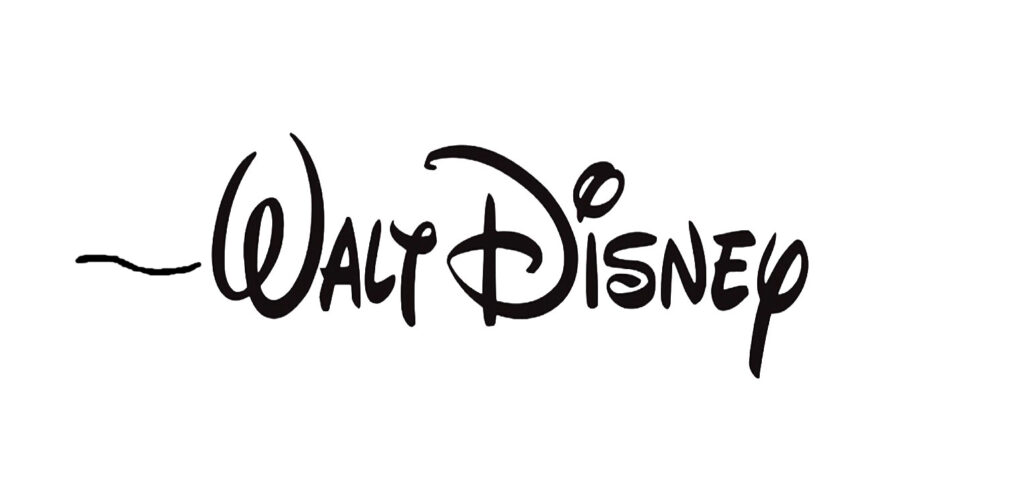THE DIFFERENCE WAS WALT’S INVOLVEMENT
Walt Disney’s thorough undivided and detailed attention to any particular project – what is today called “micromanagement” – seems to have been the determining factor in that project’s artistic quality. Some would assert that Walt’s influence was limited mainly to the storytelling.
…the one talent that everyone who ever worked for him agrees that Disney possessed in abundance – that of a story editor.[1]
This assessment is corroborated by longtime Disney stalwart and supervising director Ben Sharpsteen (1895-1980):
“…Walt’s acting and storytelling ability were an important feature in the success of the studio. He had a terrific personality for telling stories in such a way that the animators and directors were thoroughly confident and believed in them. He could tell a story so that you could see it as it would appear on the screen. I cannot give the man too much credit.”[2]
But the fact is that the entire look, feel, “production values” – everything about these features! – resulted from his “busy bee” involvement. As Walt himself put it:
“…I go from one area of the studio to another and gather pollen and sort of stimulate everybody. I guess that’s the job I do.”[3]
Animators would occasionally find crumpled pages retrieved out of their wastebaskets with a note from the boss: “Don’t throw away the good stuff!” That’s how they knew Uncle Walt had been buzzing about his studio the night before and pollenating!
What Disney wanted was more and more imitative realism in the movements of his characters, more and more detail (and lushness) in the backgrounds, greater and greater fidelity to nature in special effects ranging from lightning to the fall of raindrops.[4]
His studio and the staff he assembled there, Disney’s famous “Mouse Factory”, obviously released numerous other films. Some of them were hodgepodges or medleys of shorter animated segments – Saludos Amigos (1943), The Three Caballeros (1945), Make Mine Music (1946), Fun and Fancy Free (1947), Melody Time (1948), Ichabod and Mr. Toad (1949). Others were “live action” movies, some with extended animated sequences – Song of the South (1946), So Dear to My Heart (1948), Mary Poppins (1964). In addition, later years saw production of several award-winning documentaries and nature featurettes, one propaganda movie Victory through Air Power (1943), and a steady stream of programs for the brand-new medium of television. While many of these projects were entertaining and delightful in their own ways (and numerous others rather deplorable), none can lay claim to the sublime magnificence evident in the first nine mentioned beneath my blog’s heading above. Why? Because the others were either primarily undertaken to earn money for financing Disney’s more determinedly artistic endeavors or else simply deprived of that devoted attention he heaped upon those nine, some of which simmered for years – even decades! – on the back burners of his bustling creative mind. A couple titles – Alice in Wonderland, Peter Pan – are clearly visible on the spines of the books piled behind Jiminy Cricket during his introductory narration in Pinocchio more than a decade before those features were released. However, World War II interrupted the best laid plans of mice and men…
Disney himself disavowed any artistic aspirations. He insisted that he was creating merely popular entertainment. “I’ve never called my work an ‘art’”, he said, although his ambivalence in the matter is evidenced by other of his comments: “I take great pride in the artistic development of cartoons” and regarding Snow White “It’s no more a cartoon than a painting by Whistler is a cartoon.”[5] Disney’s disavowal of artistic pretensions brings to mind that even such an unquestioned luminary as Leonardo DaVinci (1452-1519) sometimes marketed himself as primarily a munitions designer and war strategist rather than as a great painter.
These nine Disney masterpieces, unlike so many other great works of art – especially the graphic ones – offer one very fortunate advantage: anybody can own them! Not so of a Mona Lisa or Les Demoiselles d’Avignon, the originals of which you can enjoy only by confronting them in whatever remote museum they happen to be sequestered. The animated feature duplicated in no matter what medium is absolutely identical to the original – or it should be! In this regard they are like the great novels since Gutenberg or the classics of music since the gramophone. You do not need to make a pilgrimage: they can come to you!
[1] Schickel, Richard: op. cit., p.110.
[2] Johnston, Ollie, and Thomas, Frank: op. cit., p. 380.
[3] Smith, Dave: The Quotable Walt Disney, Disney Editions, NY, p.98.
[4] Schickel, Richard: op. cit., p.147.
[5] Smith, Dave: op.cit., pp. 197, 10 and 201, respectively.
